Our Blog - Bordeaux June 2017 Blog - Saturday (Day 2)
Today was mainly dedicated to the Cité du Vin, which is a fairly new museum of wine, which opened in May 2016. It is a bit North of the centre-ville, but it is really easy to get there using the tram. It says the average visit time is 2-3 hours, but I think we spent more like 5 hours there. There was plenty to explore, if you are interested in learning about wine (both history and current). There are 20 (or so) different themed areas to go through if you want (we didn't make it through all) and some of the areas have enough information that you could spend a solid hour there. It comes with an audio-guide tool (slightly different than the normal audio guide) that you can get all of the information in one of 8 different languages. Most of the written text is also in French, English, and Spanish. At the top is an observation deck where you can get a great view of the river and city, and taste one of a variety of wines from around the world (included in the ticket price).
The aim of the building’s architecture is to create a link between the museum and the spaces surrounding it through perpetual movement. It was designed such that the shapes resemble gnarled vine stock, wine swirling in a glass, and the eddies on the Garonne.
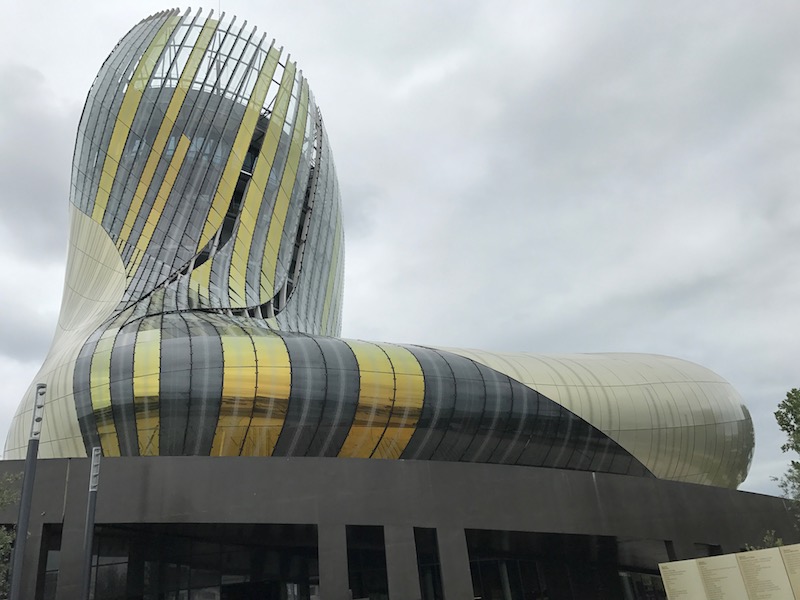
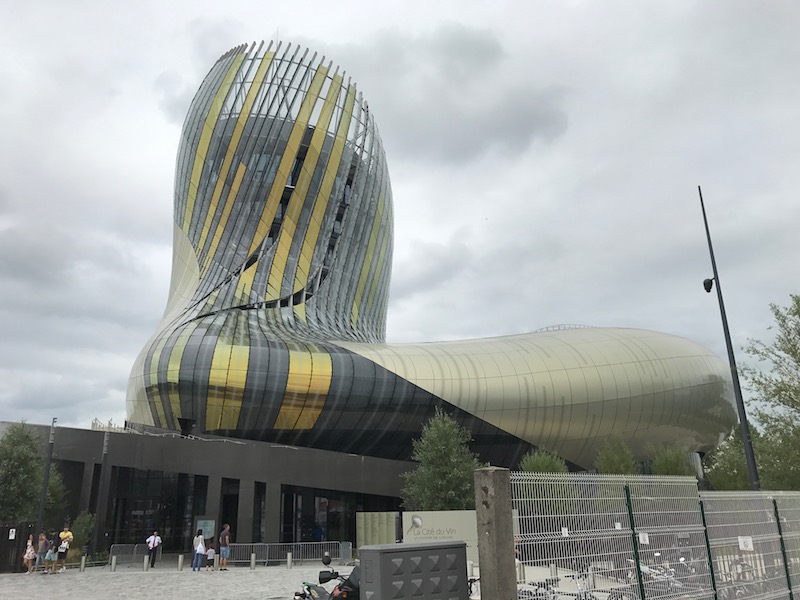
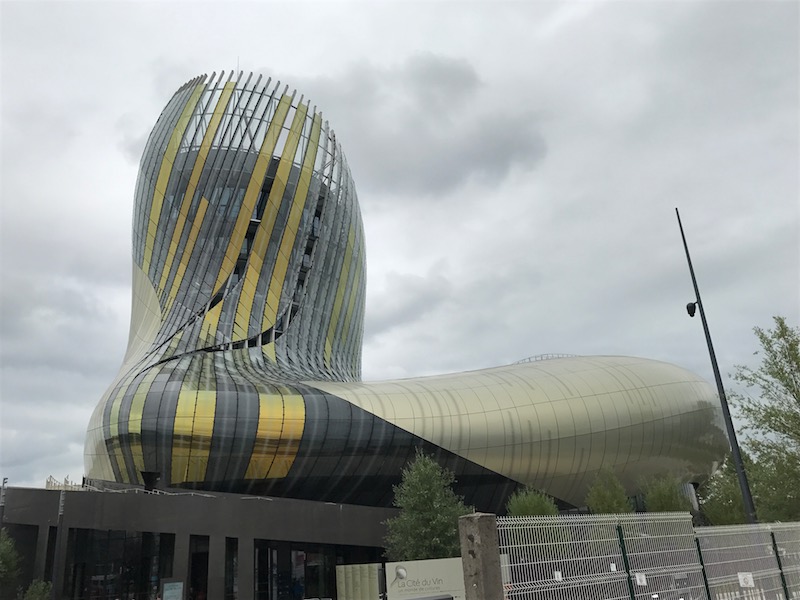
On the main floor, they have this model of what the area and building looks like.
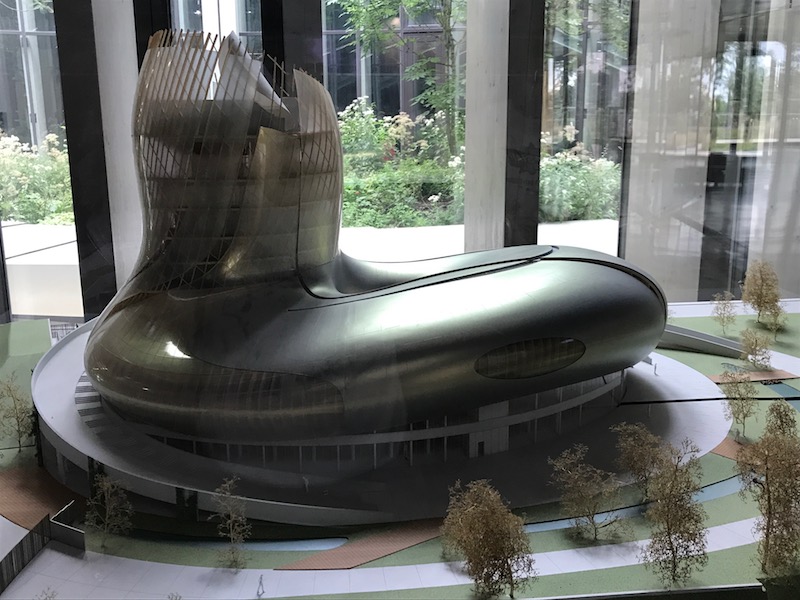
The first exhibit was entitled The World Wine Tour. Winegrowers have to adapt to their landscapes, which means that the various wine regions around the world have many "faces" which are sometimes surprising, spectacular or even legendary. There is a movie which runs that shows 20 or so winemaking regions in 17 countries around the world from a helicopter (city/region/country names in 3 different languages on the 3 different screens: English, French, and Spanish). You can see one of the big screens on the left side.

Next is a set of globes in a section called The Worlds of Wine. Each globe is a station with a different topic, like the first one "Vines and Climates". You start your audio guide and then you can spin the globe around and it shows different information on the TV screen based on what part of the globe is positioned behind it. It was a very interesting display.
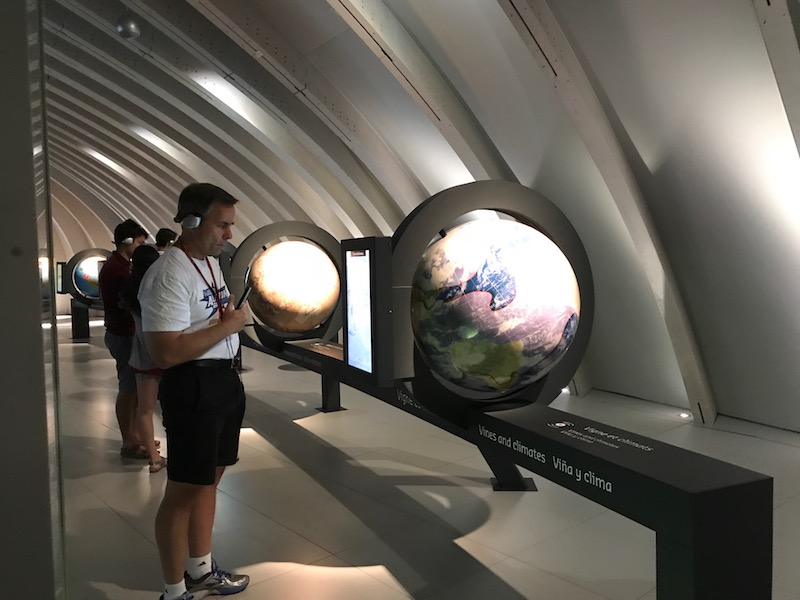

This part was where I think we spent the most time and I think it was actually the most interesting for us. Entitled "The Terroir Table", it had a set of 8 or so locations around the world for wine (like New Zealand, the US, Italy, Germany, France) and each location had 5 or 6 people. The word "terroir" is used for both food and wine, and they say that the terroir forms the taste. For a wine, the terroir is defined by various elements: the soil, climate and exposure of a particular location, as well as its history, traditions and expertise of the men and women working every day to create its wines. On each table, you choose which of the people to listen to, and they describe what makes their wine unique and gives their terroir its identity, something gradually shaped over the generations. For example, the last one is a guy from the Kakheti region of the country of Georgia, and he describes how they make wine using very old traditional methods including the use of clay vessels called kvevris during the fermentation process.



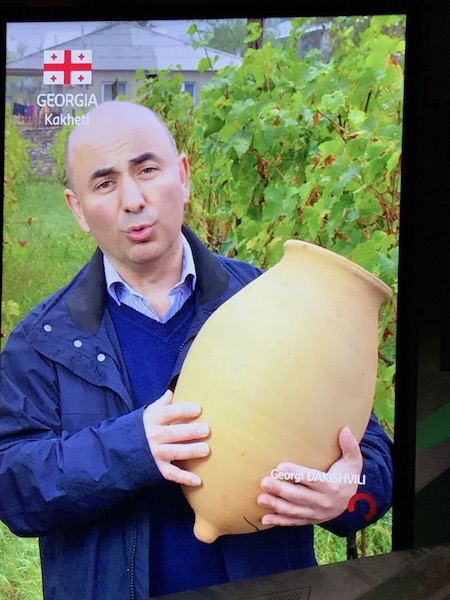
There were lots of other exhibits ... some going back to ancient times and depicting how wine was important all the way back into ancient Egypt and where you can find depictions of wine scenes in ancient drawings. They spoke of how wine was extensively used with religious people and how things evolved. There was a section which talked about champagne and how the "bubbles" were actually discovered by accident and then the people who were trying to then figure out how to make the bubbles on purpose had some issues, since the glass bottles at that time did not really stand up to the pressure caused by the bubbles and the majority of the glass bottles would shatter. There was also sections that dealt with smells and you could go through and smell certain things and try to guess what it was (fruits, flowers, leather, etc).

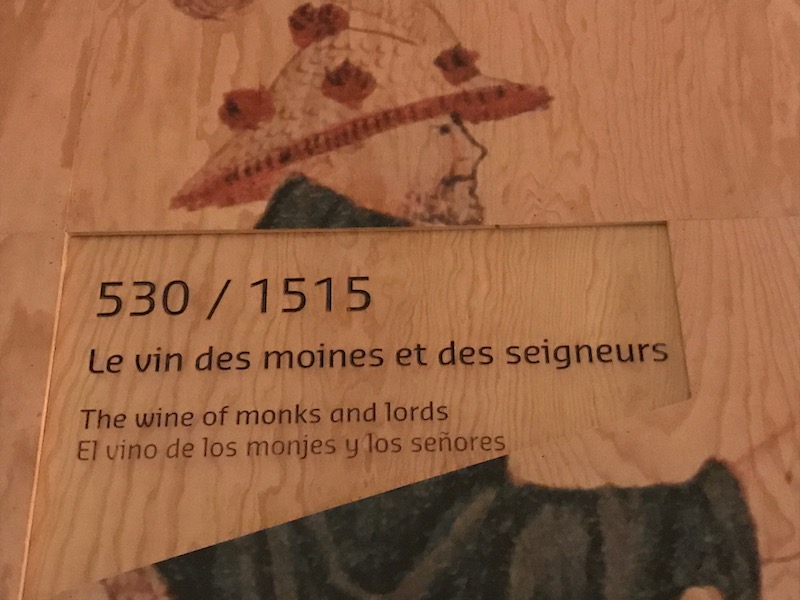





The observation deck at the top is where you head to get your wine tasting, which we did right after lunch. The ceiling is all covered with wine bottles, which makes an interesting view. They have a set of counters where you get to taste one of a set of about a dozen or so wines from around the world. Tom tried a wine from the country of Georgia, although he said it wasn't the best red wine he's ever had.


From the observation deck, you get a really good view of the city and the river. One thing you can see is this bridge, which is a very unique bridge. The Pont Jacques Chaban-Delmas is a vertical-lift bridge that was opened in 2013. It is 361 feet long and as of 2013, it was the longest vertical-lift bridge in Europe. The central section can be lifted vertically a little over 170 feet to let tall ships pass underneath (as opposed to other drawbridge styles like bascule (what most people think of as a drawbridge) or swing bridge). There is an interesting YouTube video in English which talks about the bridge if you are really interested.
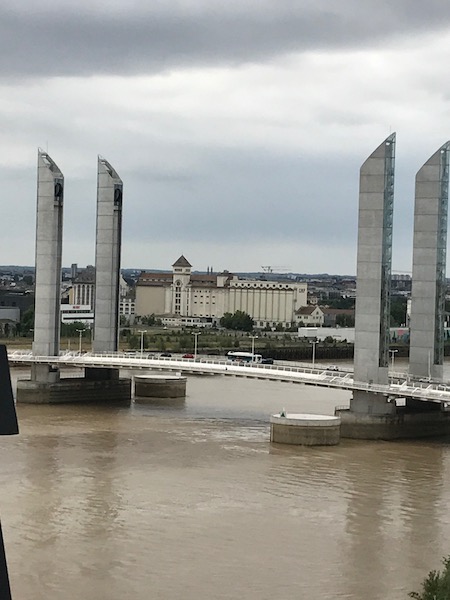

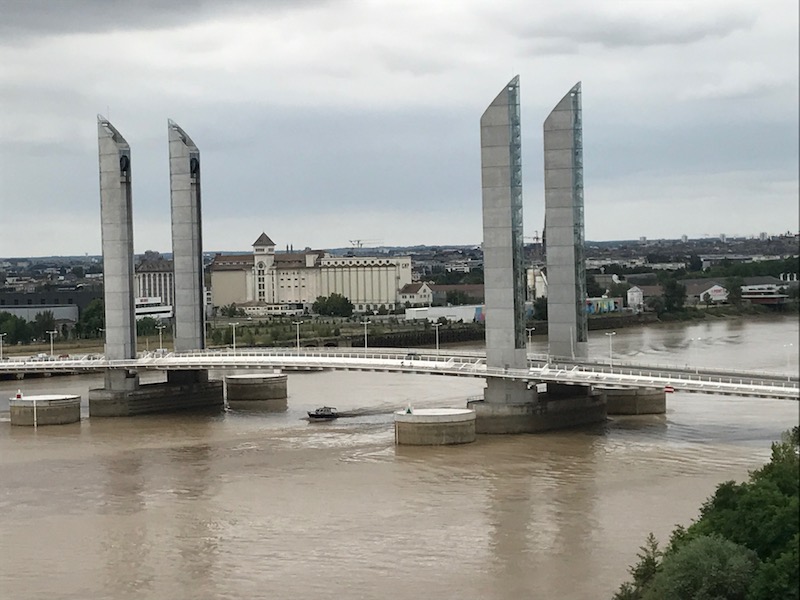
And then the city looking down the Garonne river, the main part of the city is on the right side. You can see a big cruise ship there also.


The shop on the ground floor has an interesting circular shape and has wine from around the world, literally.

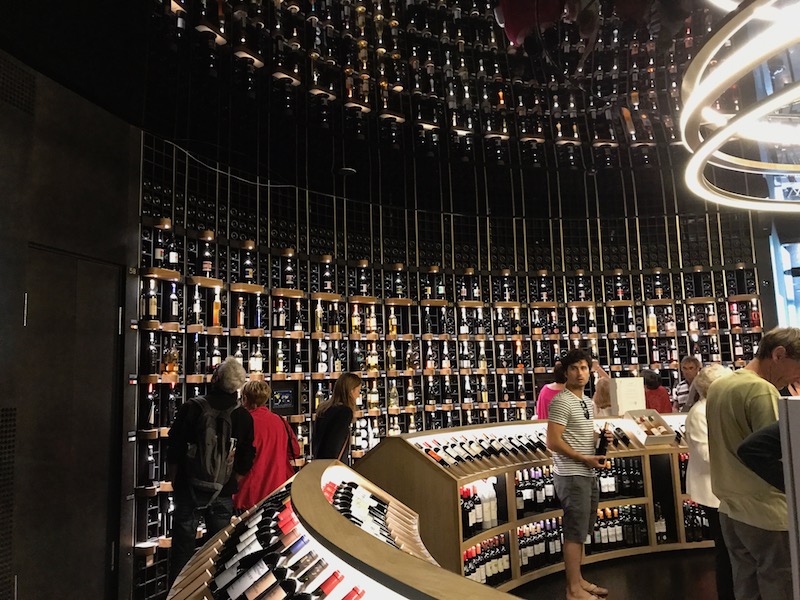
As we left, I grabbed a couple more pictures of the bridge from ground level.


Rue Sainte-Catherine is a little over a kilometer in length and is the main shopping street in the city. It is often billed as the longest pedestrian street in Europe. At one point on the street, there is a bas-relief that indicates the presence of two underground rivers that are flowing into the Garonne: the Peugue and Devèze. They used to be above ground but have since been basically covered over but they still run under the city. Now, I realize that this was a Saturday, but just LOOK at how packed it is with people!

Down a couple blocks from Place de la Comedie is the Galerie Bordelaise, a shopping mall which opened in 1834. It is unique in that it forms a diagonal channel through the middle of its surrounding buildings. It had initially been funded by four rich South-American traders who had fled war in Mexico. The decorations include double marble columns with Corinthian capitals, and Pompeian decor.
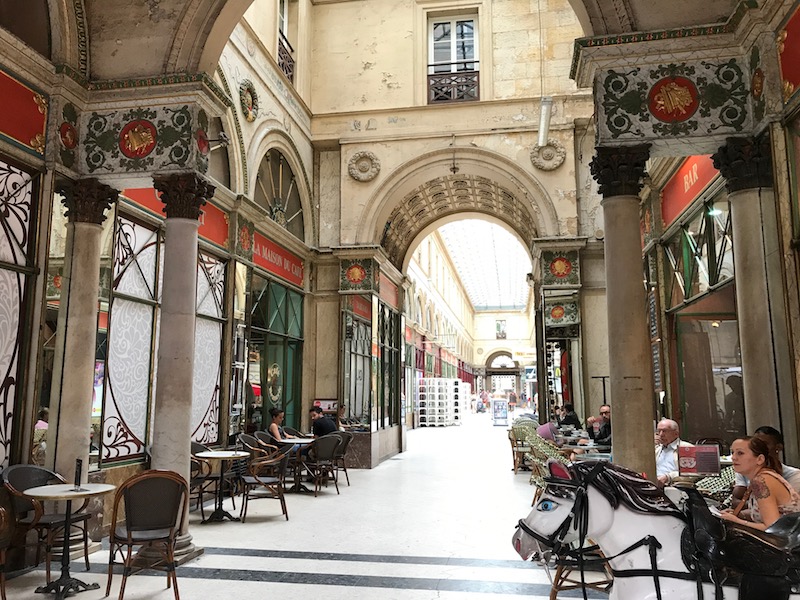
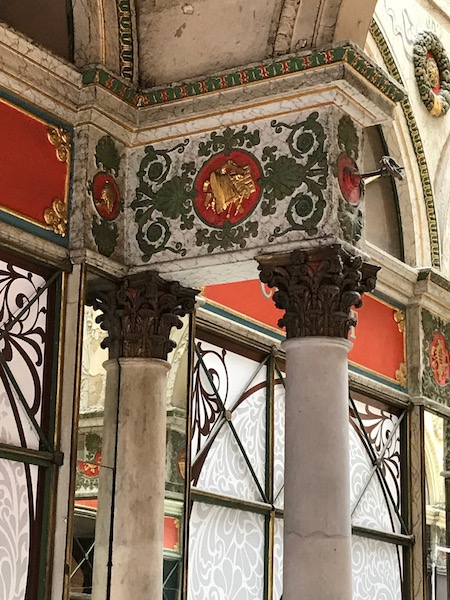

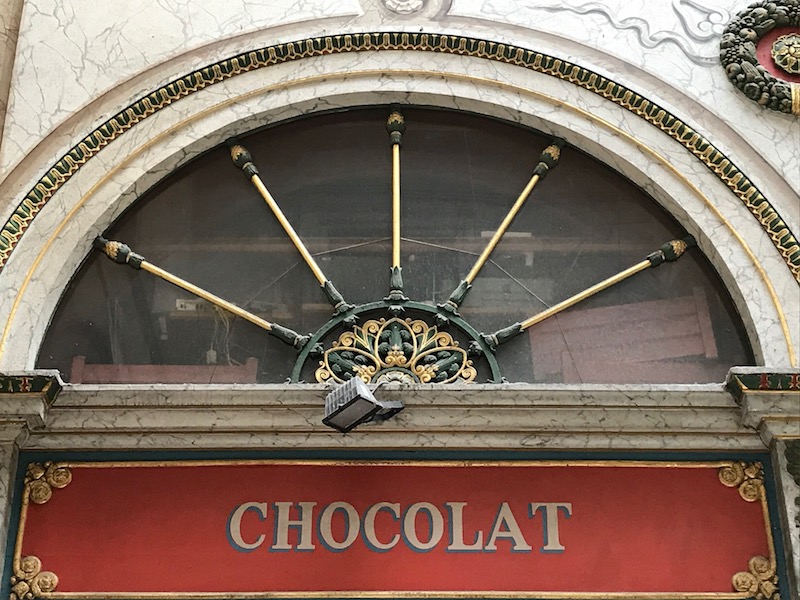

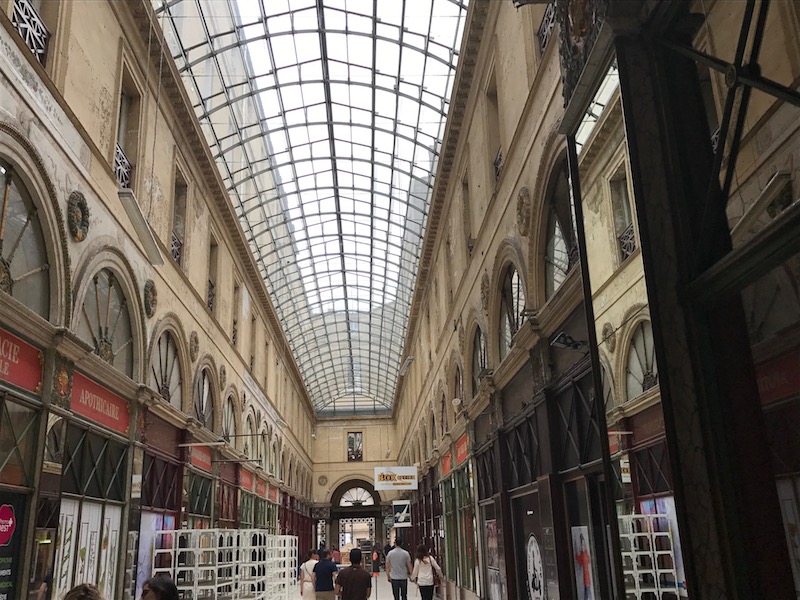
We took a break here for coffee and to munch of a couple of canele's and macaroons.

I covered the Grand Theater a little bit on the Friday blog, but Saturday we got a chance to head inside and go through a guided tour. Mind you, the tour was only in French so while we were able to understand some of it, there were definitely parts that we didn't understand what she was saying, especially since she was speaking REALLY fast. The site of the Grand Theater, which was outside of the city walls, was chosen for a couple reasons. First, there really wasn't room inside the walls for such a large and grand theater. Many of the aristocracy were already building mansions outside the walls in "the country". Secondly, much of the area of Bordeaux at that time was somewhat swampy and the location was where an ancient Gallo-roman forum and temple, the Temple of the Piliers of Tutela, was located. It dated back from the end of the 2nd century and was destroyed in 1677 when the Chateau Trompette was built.
The theatre has not always been as prominent as it is today ... the immediate surroundings were actually lowered in the mid-18th century. Until then, the square at the front was level with the bottom of the columns and horse-drawn carriages used to regularly collide with it. This is less likely to happen now that the theatre appears to have risen from ground level with the addition of the steps.
As you go in, it has a huge lobby, with grand columns and decorations on the ceiling. Over the doors on one side are lovely arches with different theater motifs, like masks and instruments, along with various types of vegetation and flowers.
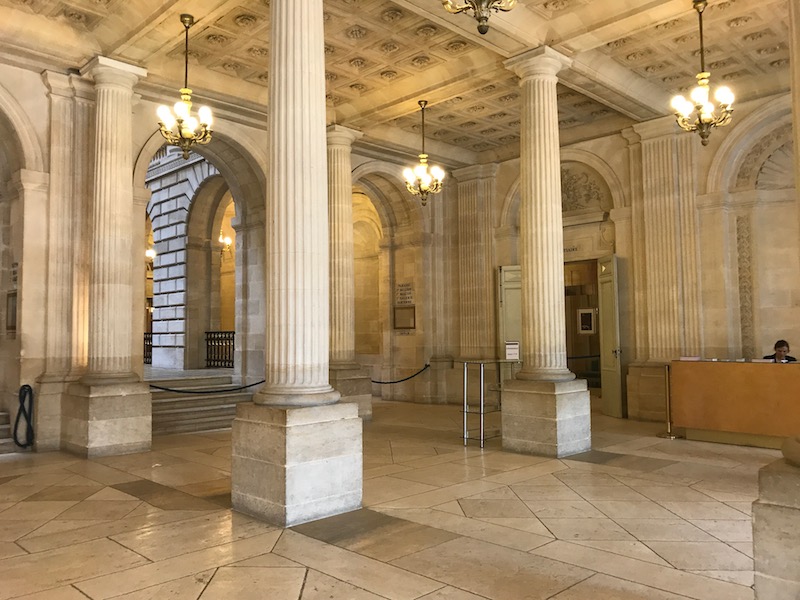
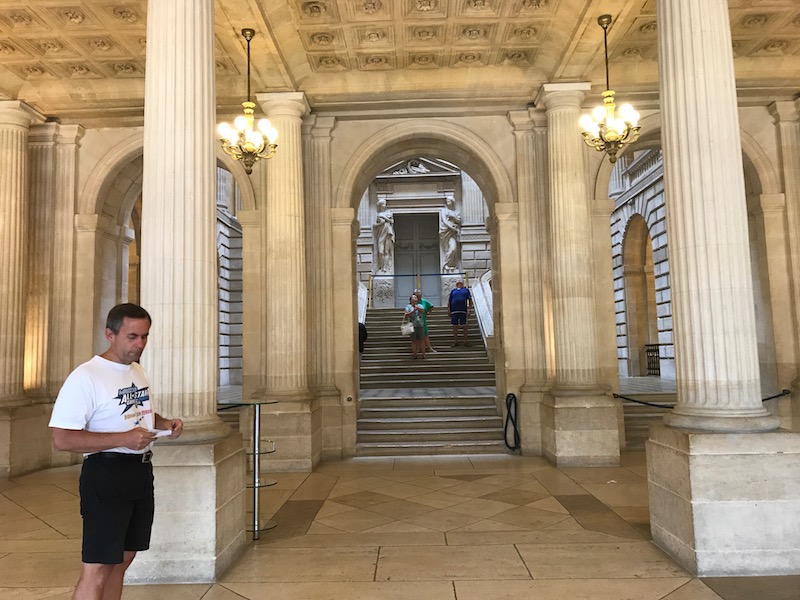




For the centenary of the theater in 1870, the Bordeaux sculptor Amédée Jouandot created a sculpture of the architect, Victor Louis (although in fact, Victor Louis was a but stocky and had a round face). While the statue looks like marble, it is actually out of a substance called phonolite, which is a volcanic stone. If you take a metal key and bang on it it actually sounds like a hollow metal, which was a bit interesting. This has been installed in the lobby as well.

The grand staircase has a couple sections. The first goes up to a landing where you see a large door flanked by two caryatids by sculptor Pierre-François Berruer: Thalie and Melpomène, with a "roof" above with musical instruments. There are additional statues in two niches, and then at the very top, in the middle is the coat of arms of Bordeaux along with a plaque which talks about the creation of the theater under the reign of Louis XVI. Under all of this is a grand vaulted ceiling with windows, to let in the natural light. Originally, there was no lighting in the lobby or stairs and it was purely lit by natural light. Then the staircase divides into two new staircases leading to the second floor.
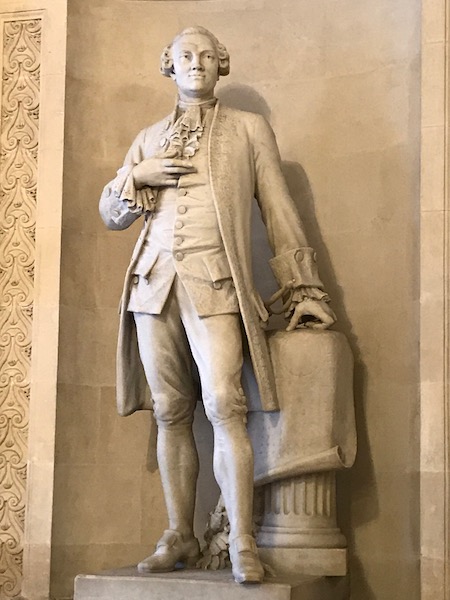


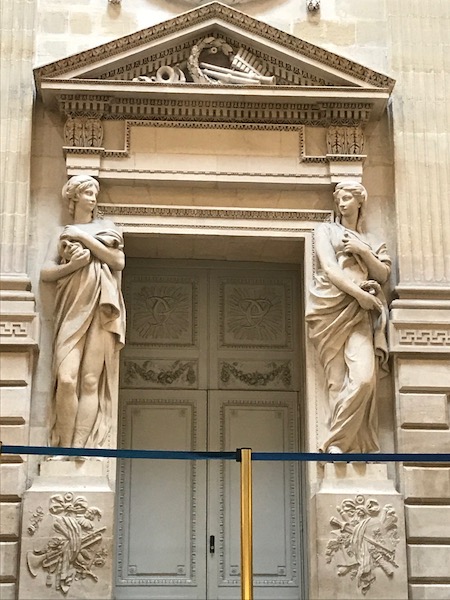

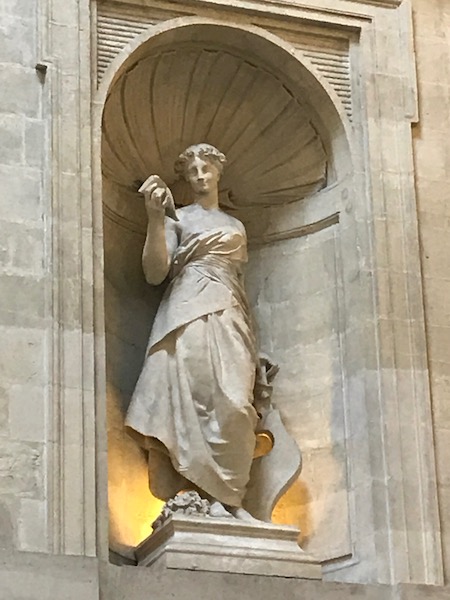



The concert hall, which was used in the 19th century as a ballroom, was renamed Salle Gérard BOIREAU in honor of one of the famous directors of the Grand-Théâtre in the 70s to 80s. On the ceiling, there is a great painting by William Bouguereau, representing Apollo surrounded by the Gods of Olympus and the Muses. Around the room you can also see 14 medallions with portraits of composers including Mozart, Rossini, and Beethoven.









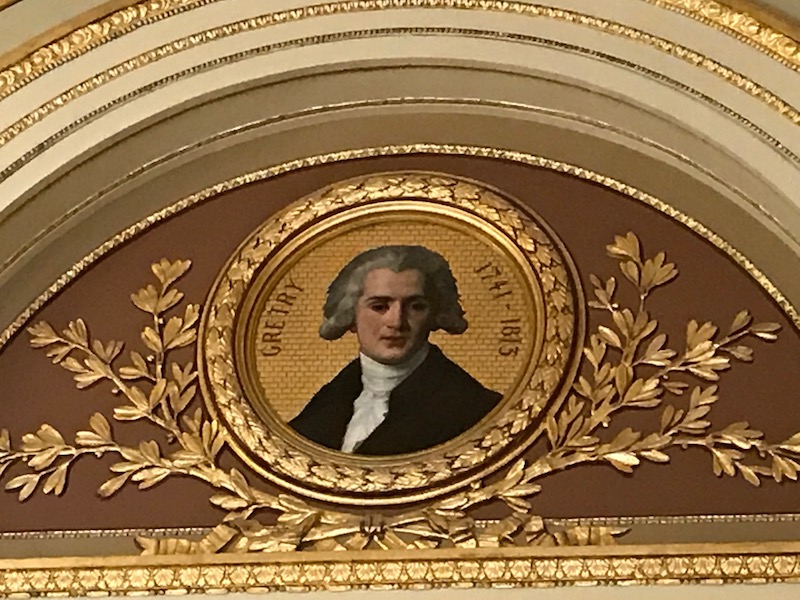
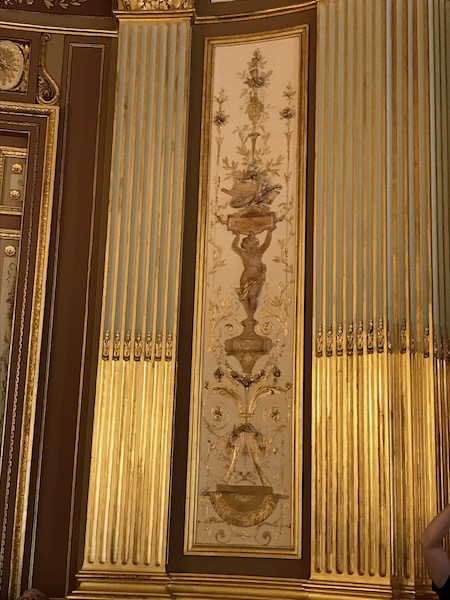

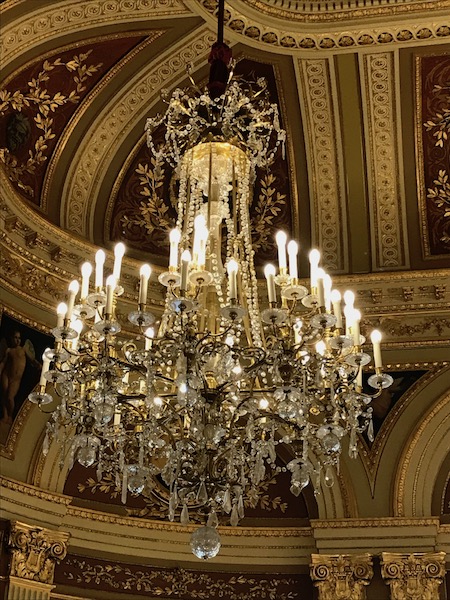
This is the next room over from that salon, and this one has not been restored. You can see the floors, which actually look worse in person than they do in the picture. You can see some amount of decoration on the walls and ceiling but it is quite faded.




The actual "salle de spectacle" is decorated with blue, white and gold. Initially, the hall could accommodate 1,700 spectators although today there are a bit over 1,000 seats. There are lots of box seats around the outside. We were not able to go actually into the theater as there were some dancers who were practicing for Romeo and Juliet (the ballet) which opens in July. I was able to get some nice pictures of the ceiling area with the various decorations there.
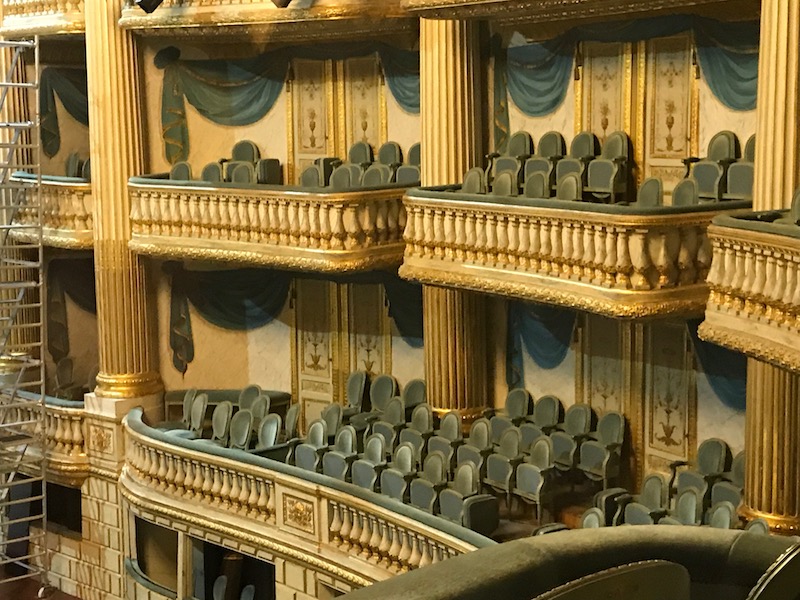
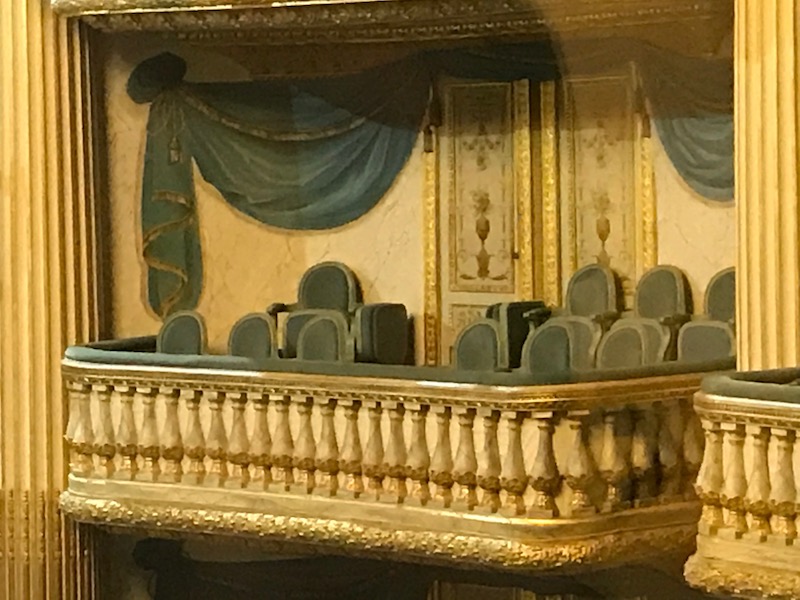


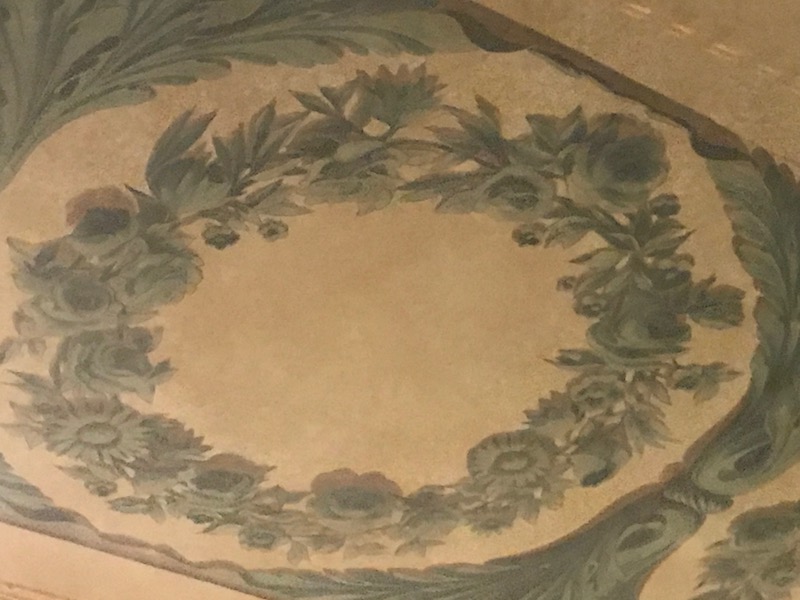

Dinner was very near Place de la Comedie at a restaurant called Le Bouchon Bordelais ... Bordelais meaning from Bordeaux, and Bouchon is the name for a cork, like in a wine bottle. It was a nice place, a bit small for American standards (about normal for French standards) with white stone walls. The entire restaurant was full for the evening ... good thing we had reservations! We of course went with a nice red wine from the area, and they had a tuna tartare amuse bouche.


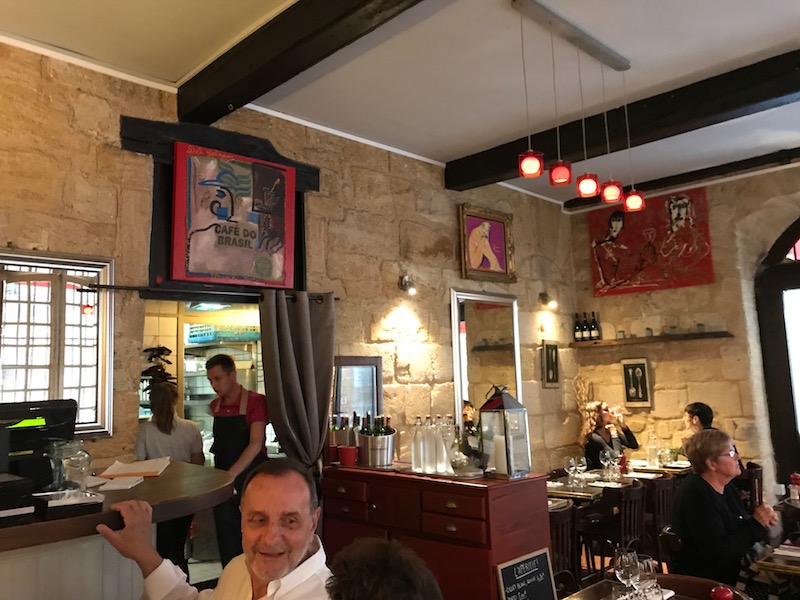

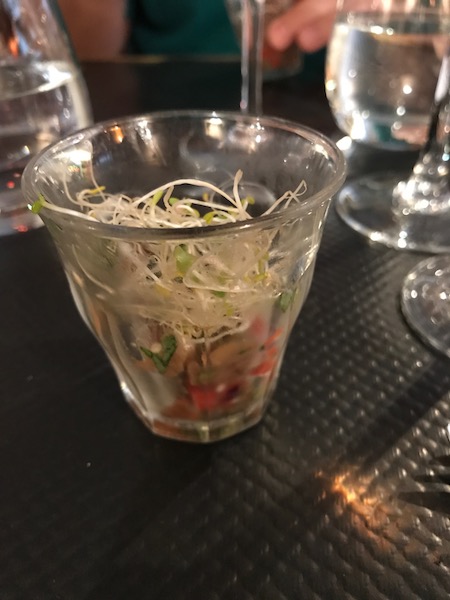
For the starter, I went with the house-made fois-gras and Tom went with the oysters. Normally, we aren't big fans of oysters and while he tried them again, still not his favorite.


Main course, I went with a nice piece of beef with peas and green tomatoes. Tom had fish (I think Cod) with lentil falafels, asparagus, and tomatoes. Needless to say, it is tomato season and we see lots of them in the markets!


For dessert, we went with one sweet and one savory. The sweet was an ice cream on top of a cookie, on top of cherries ... it also being cherry season. Then a place of various cheeses. We then finished it off with espresso's, which came with their one little canele!

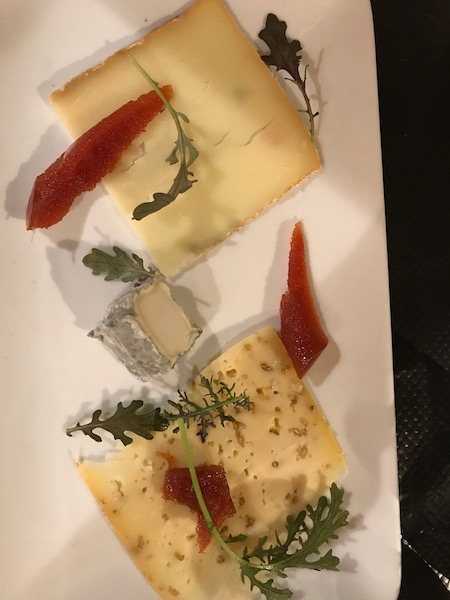
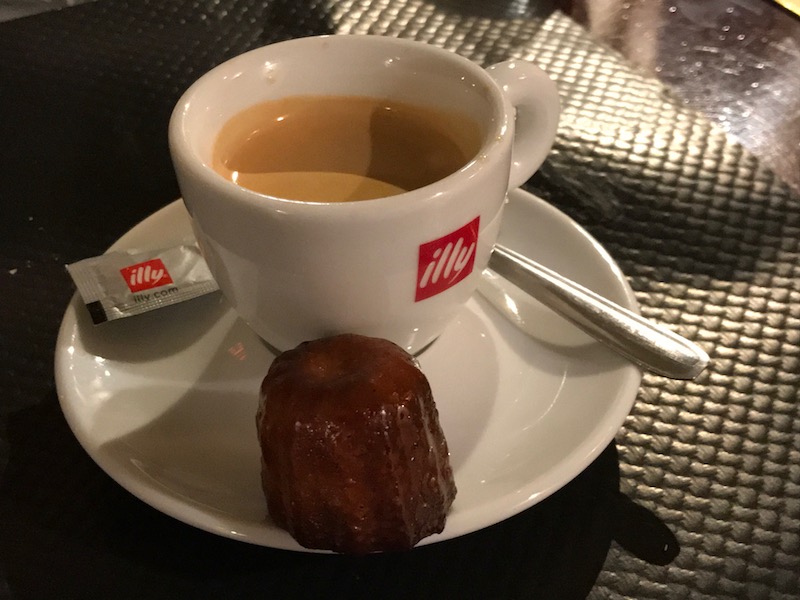
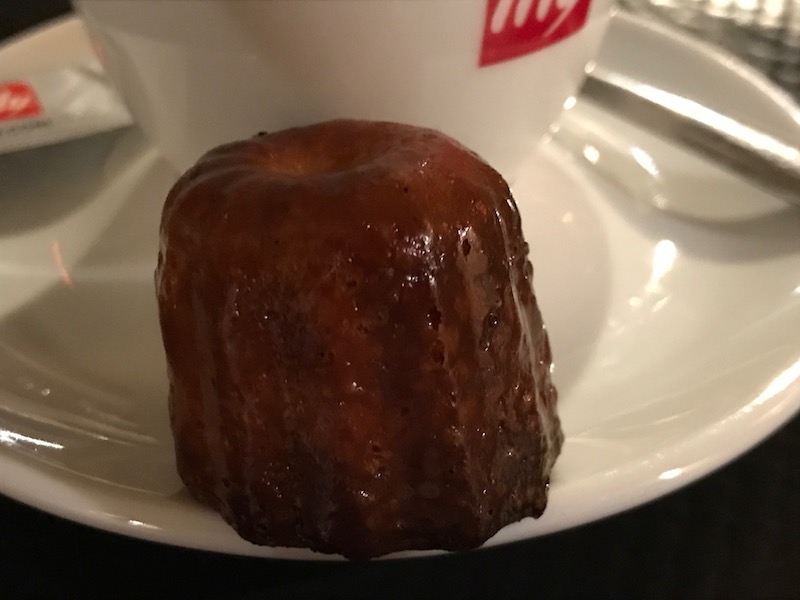
Night again at Place de la Comedie including the Monument aux Girondons and a carousel.











You can now